Wort Filtration Overview
Wort filtration process and method
Wort Filtration Process Objectives
- low solids wort;
- The enzymatic oxidation process of wort, mash with little oxygen uptake or occurring during whole wort filtration low degree;
- Less harmful substances leached from wheat husks;
- And ensure that the full pot of wort meets the iodine test qualification;
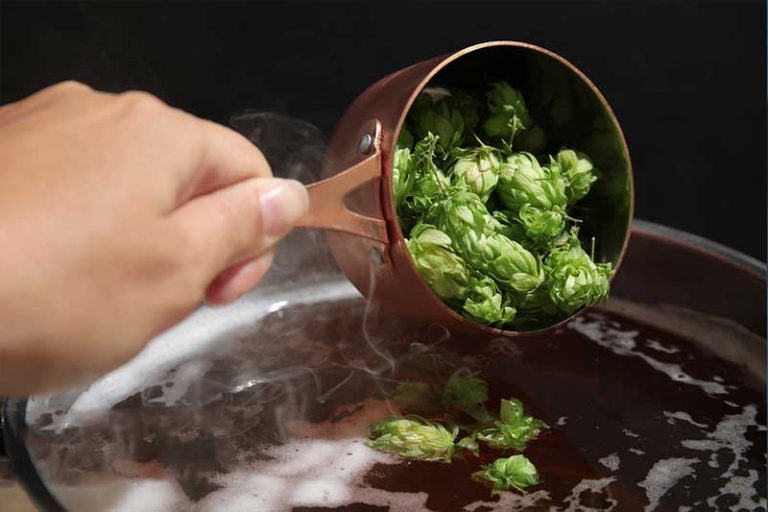
Wort filtration with filter tank
The characteristics of the filter tank to filter the wort
- The filter screen acts as a supporting medium
- The spent grains layer is the real filter medium and should form a compressible filter layer
- Filtration at any time to compact the grains, the resistance of the grains increases, and the wort outflow is less. Generally, the resistance of the grains is reduced by cultivating the grains, and the number of filtered wort increases.
- tank is normal pressure filtration, and the filtration driving force is the static pressure of the liquid level.
Wheat grains (husks) contain extracts. Considering the yield of saccharification, the grains must be washed , and because the grains (husks) contain harmful substances such as polyphenols, insoluble starch and protein, which will affect the quality of the filtered wort. Negative Effects.
Technical requirements for wort filter tank
- Meet the basic requirements of wort filtration Filtered wort solid content <50-60mg/L Filtered wort turbidity<5-30EBC Oxygen content of filtered wort<0.1mg/L
- The occupied time of the wort filter tank is less than 2-3 hours
- The moisture content of wet grains is less than 80%
- Less than 0.5% leachable extractables in spent grains
The characteristics of the filter tank
- Sealed filter tank
- The bottom of the mash and wort enter the filter tank
- Large diameter filter tank
- Automatic continuous plowing of grains, eliminating the increase in the resistance of grains
- Washing the grains and , the amount of extracts decreases when washing grains, the residual extracts in the grains are small, and the concentration of residual water in the grains is low.
- Recycling residual water
Filter tank structure
- The shape, material, and installation requirements of the filter tank The shape of the filter tank is cylindrical, there is an umbrella cover on the top of the tank, and there is a steam exhaust cylinder that can open and close the gate To avoid the increase of viscosity due to the drop of mash temperature and affect the wort filtration, the filter tank must be equipped with a good thermal insulation layer Extensive use of food-grade stainless steel The filter tank must be installed , and the bottom of the tank and the sieve plate must be kept horizontal, otherwise the thickness of the bad layer will be uneven, which will affect the filtering and cleaning effect. Filter tank bottom: shallow conical, shallow oblique, flat-bottomed round, but most of them are flat bottoms Each filter wort outflow pipe is distributed every 0.9-1.25 square meters
- Filtration capacity of the filter tank The filtration capacity of the filter tank is represented by the feeding amount and the total amount of mash, generally 8hL mash/100kg feeding amount Select the smallest post-filtered grain layer thickness that can ensure the filtering effect is 20-25cm, as the basis for determining the feeding amount per unit area The diameter of the filter tank becomes larger, and the area of the filter tank increases, so about avoid the excessive thickness of the spent grains layer, which can reduce the resistance of the spent grains during filtration, which is beneficial to the wort filtration and washing. Thus, large-diameter filter tanks are used at present, which is very suitable for the filtration of high-concentration wort. In high-concentration saccharification, the humidified dry crushing or limited humidification wet crushing should be selected to ensure good malt crushing effect.
- Sieve plate and sieve plate cleaning Generally, a block sieve plate is used, about 2cm from the bottom of the tank The area of each sieve plate is generally 0.7-2㎡ Each filter screen is supported by its edge guides and small support feet The strip sieve hole is trapezoidal between the sieve plate and the bottom, the width of the hole on the sieve plate is 0.5-0.8mm, and the width of the hole under the sieve plate is 3-4mm 10%-15% opening rate can meet the needs of wort filtration Install 1~2 cleaning nozzles per square meter of filter area The cleaning nozzle is generally installed between every two wort outlet pipes Requires even distribution under the filter tank It is best to clean the space between the sieve plate and the bottom of the sieve plate groove after each wort discharge, which can ensure the good permeability of the sieve plate during each wort filtration, which is beneficial to the wort filtration. The cleaning nozzle is cleaned by 180°rotation, the water pressure is 0.3MPa, the water consumption of each nozzle is 0.7m3/h, and the water consumption is low
- Wort filtration step using filter tank Press hot water Pump in mash Stand still Pre-spray and reflow First wort filtration Washed wort filtration Drainage residual water, drain Clean the sieve plate
- Features of the tiller Stable performance and easy maintenance Guaranteed to form a uniform layer of spent grains It can and till the grains according to the resistance of the grains, the flow rate of the wort, and the turbidity of the wort, which can reduce the resistance of the grains when plowing the grains. It can ensure the thorough cleaning effect of the bad grains, and the saccharification yield is high. According to the diameter of the filter tank and the size of the feed, the tiller can be equipped with many cutter arms The most linear speed is less than 3-4m/min when tillage The uneven layer of grains should be avoided when cultivating grains in the large filter tank, and the resistance of grains should be eliminated within 3-4 minutes. A straight, zigzag or wavy tiller mounted on the underside of the armGenerally, the distance between the tillers is 10-20cm, which increases from the outside to the inside. The arrangement of the tillers should be a cross structure, and each knife should be in the middle of the two front knives.
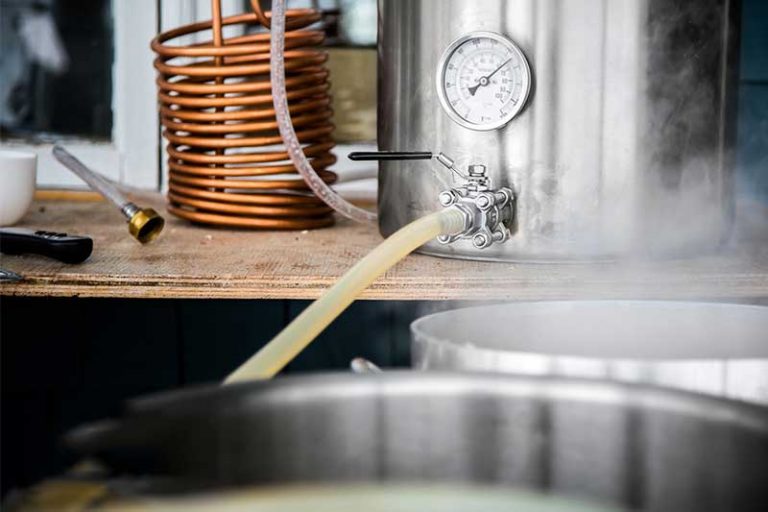
Filter tank structure
- The beginning of wort washing: when the first wort is filtered to the point where the wort layer is about to be exposed, the first wort filtration ends and the wort washing process begins.
- When washing the grains, the grain tiller should be started, first till the surface of the grains, and then descend until the tiller is 5-10cm away from the sieve plate. While cultivating the grains, use the grain-washing water nozzle to spray grain-cleaning water on the grains, start to wash the grains, and wash out the residual extract in the grains. This washing wort is also called second wort.
- Divided into continuous and intermittent washing
- To control the tiller, the tiller must cut the entire grain layer, and no gaps are formed in any part of the grain layer.
- To avoid turbidity, the grains should not be plowed too , and the grain tillers should not be placed too low. The grain tillers should not rise and fall too fast, so as not to break the grains layer.
- The pH value of the washed wastewater is below 6, which can reduce the dissolution of bad substances in the wheat husk
- It not only keeps the wort clean and less solid when washing grains
- The wort should not flow out too fast, as it takes time for the wort to wash out the extract. Otherwise, the washing of the dregs is not complete, and the yield of saccharification will decrease. Filtered wort is cloudy
- If the washing time is too long, it will affect the quality of the wort and the use rate of the equipment. Thus, the washing time should not exceed 1.5-2 hours
- Use a small amount of wort washing water as much as possible to wash out the residual extract in the wort, otherwise a large amount of bad substances in the husk will be washed out.
- Washing dregs water temperature: Generally, the washing dregs are higher at the beginning, and should be lower in the later stage, but cannot exceed 80 °C
The first wash of bad 76/78℃
The second washing of the dregs at 76℃
The third wash of dregs 75/72℃ - After washing the dregs, the liquid flowing out is called “filtered residual water”, and the concentration should not be higher than 1%.
Summarize
The above is the relevant content of wort filtration technology in craft beer! Welcome to discuss the knowledge of craft beer with the engineers of Micet Craft. You can also contact us if you are ready to start your brewery. Micet Craft engineers will provide you with a list of craft brewery equipment and associated prices. We can also provide you with professional turnkey brewery solutions, very much looking forward to working with you, my friend!
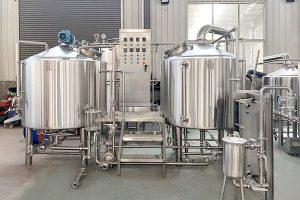
Beer Brewery Equipment Manufacturer The brewing supplies provided by Micet Craft can support your brewing needs from small batches of micro beer brewing equipment to 100 barrels capacity. Micet Craft has reached cooperation with many breweries around the world, we can design and manufacture professional brewing systems for breweries, including cellar beer brewing equipment and other
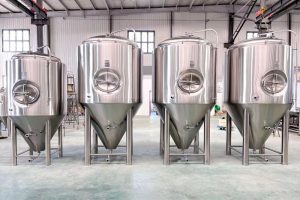
China stainless steel fermentation vessels manufacturer The fermentation tank is where the beer carry out the fermentation process, it provides a place suitable for life activities and metabolism for microorganisms. To adapt to the use of different sizes of breweries, Micet Craft produced a variety of sizes and specifications of fermentation tanks. Customers can choose
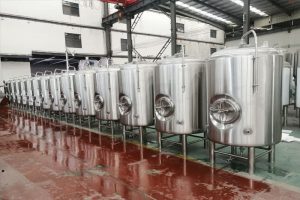
Professional bright Beer tank manufacturer from China The bright tank is a vessel for storing and carbonated beer, it is also called the brite tank. The bright tank is an important part of the workflow of professional beer brewers. It can be used to store and carbonate beer, thus eliminating the trouble of cleaning beer
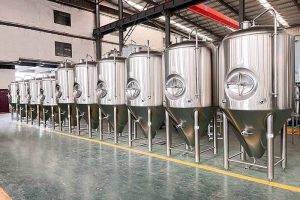
China brewing equipment manufacturer and suppliers Micet Craft has cooperated with breweries in many countries around the world to provide them with brewing equipment. We provide customers with turnkey brewery solutions, which include designing, manufacturing and installing customized breweries. The Micet Craft team has decades of experience in the manufacturing of brewing equipment, we not
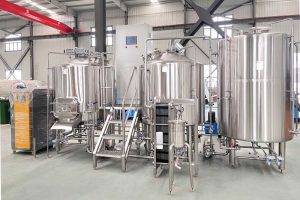
Best brewhouse equipment manufacturer from china Brewing good beer requires brewhouse equipment. Whether you are brewing beer for home, business or brewery, Micet Craft can provide a turnkey solution according to the daily output you need. We have brewhouse equipment with 2 vessels, 3 vessels and 4 vessels, the unique design allows you to do decoction
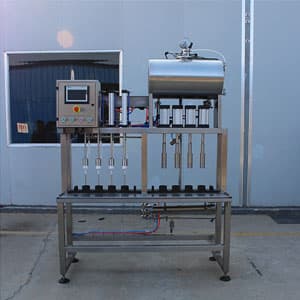
Professional beer filling machine manufacturer Beer filling machine is the core equipment of the beer production line. Our beer filling system uses stainless steel as the production material. Stainless steel is not easy to wear, and it is easy to clean. Micet Craft provides you with a cheap and efficient way of filling beer. We

Best beer brewing system manufacturer from china Micet Craft is a professional beer brewing system manufacturer in China. We mainly produce high-end customized turnkey brewing systems. Whether you are planning to open a nano-brewery, microbrewery, or commercial brewery, we can provide you with the most complete turnkey solution. Our beer brewing systems are all price-competitive

Beer Brewery Equipment Manufacturer The brewing supplies provided by Micet Craft can support your brewing needs from small batches of micro beer brewing equipment to 100 barrels capacity. Micet Craft has reached cooperation with many breweries around the world, we can design and manufacture professional brewing systems for breweries, including cellar beer brewing equipment and other

China stainless steel fermentation vessels manufacturer The fermentation tank is where the beer carry out the fermentation process, it provides a place suitable for life activities and metabolism for microorganisms. To adapt to the use of different sizes of breweries, Micet Craft produced a variety of sizes and specifications of fermentation tanks. Customers can choose

Professional bright Beer tank manufacturer from China The bright tank is a vessel for storing and carbonated beer, it is also called the brite tank. The bright tank is an important part of the workflow of professional beer brewers. It can be used to store and carbonate beer, thus eliminating the trouble of cleaning beer

China brewing equipment manufacturer and suppliers Micet Craft has cooperated with breweries in many countries around the world to provide them with brewing equipment. We provide customers with turnkey brewery solutions, which include designing, manufacturing and installing customized breweries. The Micet Craft team has decades of experience in the manufacturing of brewing equipment, we not

Best brewhouse equipment manufacturer from china Brewing good beer requires brewhouse equipment. Whether you are brewing beer for home, business or brewery, Micet Craft can provide a turnkey solution according to the daily output you need. We have brewhouse equipment with 2 vessels, 3 vessels and 4 vessels, the unique design allows you to do decoction

Professional beer filling machine manufacturer Beer filling machine is the core equipment of the beer production line. Our beer filling system uses stainless steel as the production material. Stainless steel is not easy to wear, and it is easy to clean. Micet Craft provides you with a cheap and efficient way of filling beer. We

Best beer brewing system manufacturer from china Micet Craft is a professional beer brewing system manufacturer in China. We mainly produce high-end customized turnkey brewing systems. Whether you are planning to open a nano-brewery, microbrewery, or commercial brewery, we can provide you with the most complete turnkey solution. Our beer brewing systems are all price-competitive

